Cultivating apples at home can be immensely rewarding, both during the process and when enjoying the results. If you have an apple tree and want to maximize its fruit production, pruning is essential. Pruning promotes a healthier tree, stimulates growth, and enhances both the quantity and quality of fruit over time. We’ll guide you on the right timing and necessary tools, and then explain how to prune both young and mature apple trees for the best harvest. Here are tips on how to properly prune an apple tree.
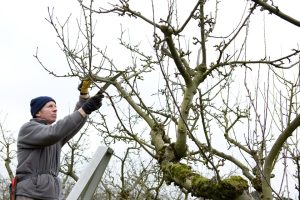
Why should apple trees be pruned?
You might be wondering why pruning is necessary, can’t apple trees just grow and produce fruit on their own? While they can, to get the best results, pruning is crucial. Pruning establishes the tree’s basic structure, making it easier to care for and increasing its yield. It also promotes tree health by removing diseased or dead wood, preventing the spread of diseases. Additionally, pruning enhances sunlight exposure, allowing sunlight to penetrate the canopy and ensuring the fruits ripen evenly and develop better flavor.
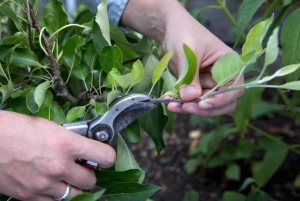
Essential Information Before Pruning Apple Trees
Tools
Choosing the right tools for pruning your apple tree is crucial to ensure clean cuts and promote healthy growth. Here’s a breakdown of the tools you’ll need:
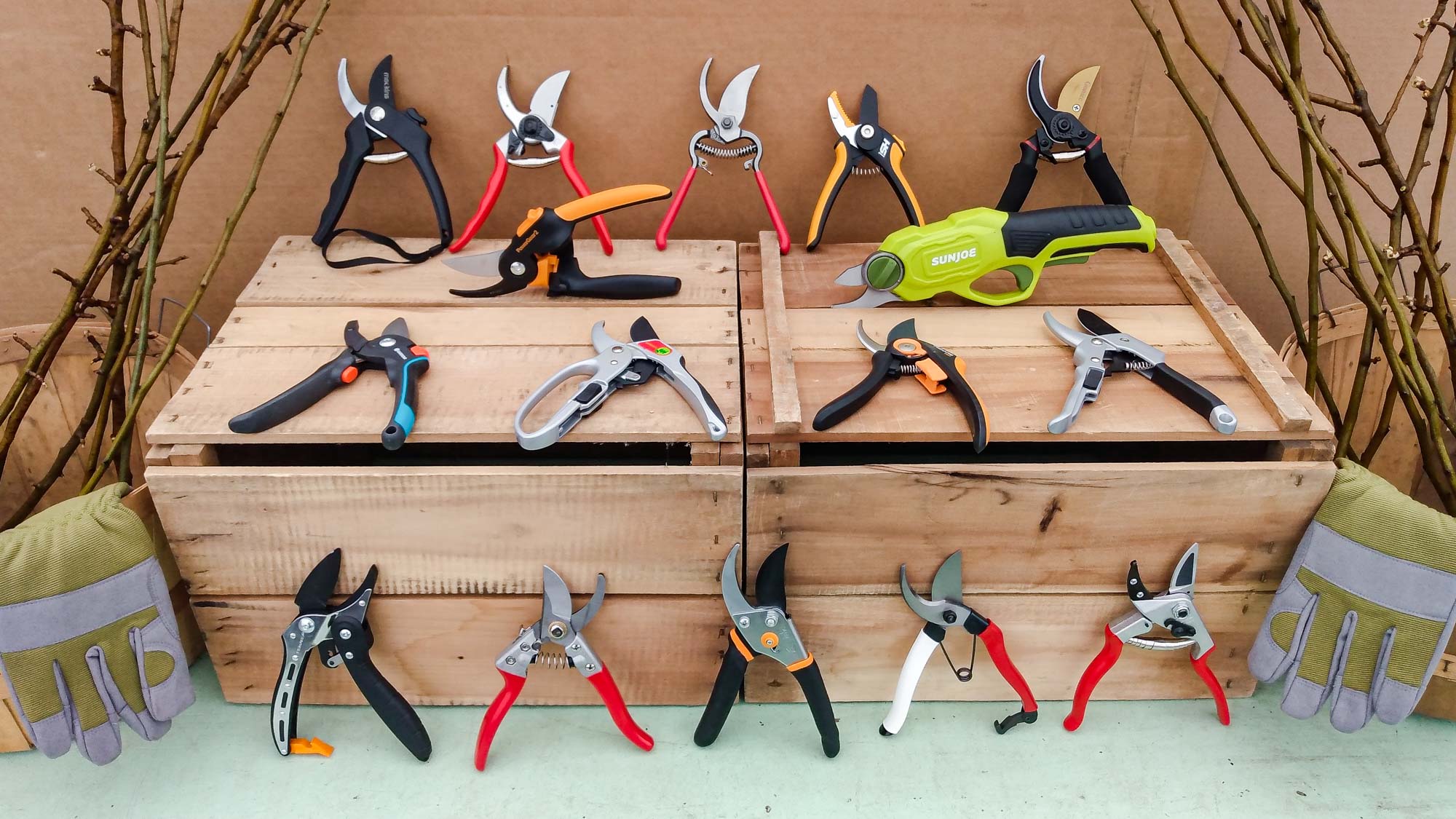
- Pruning Shears: Ideal for small cuts on limbs smaller than 3 cm in diameter. These hand-held shears allow you to make precise cuts, which is important for maintaining the shape and health of your tree. They are perfect for snipping away smaller branches and for detailed trimming work.
- Lopping Shears: For branches between 3 cm and 5 cm in diameter, lopping shears provide the leverage needed to cut through thicker branches with ease. They have longer handles than pruning shears, giving you the ability to reach higher branches and apply more force without straining.
- Pruning Saw: When dealing with branches wider than 5 cm, a pruning saw is necessary. This tool has a curved or straight blade with sharp teeth designed to cut through thicker wood. It’s essential for removing larger limbs that pruning shears and lopping shears can’t handle.
- Pole Pruners: For those hard-to-reach branches high up in the tree, a pole pruner is invaluable. This tool allows you to prune branches without the need for a ladder, providing safety and convenience.
- Hand Pruners: Also known as secateurs, these are perfect for trimming small shoots and twigs. They offer precision and are easy to handle, making them a staple for any gardener.
Tool Maintenance and Hygiene: It’s important to keep your tools in good condition. Using tools that are too small for the task can damage the branches, causing unnecessary stress to the tree. Conversely, tools that are too large may result in clumsy, improper cuts. Sharp, well-maintained tools make cleaner cuts, which are easier for the tree to heal.
Before and after pruning, always disinfect your tools with isopropyl alcohol or a diluted bleach solution. This simple step prevents the spread of diseases and pests from one part of the tree to another, or from tree to tree, ensuring the long-term health of your apple trees.
When should you prune apple trees?
Knowing when to prune your apple tree is just as important as knowing how. The timing of your pruning activities can significantly affect the tree’s health and fruit production.
- Late Winter to Early Spring: The ideal time to prune apple trees is during late winter or early spring, just before the tree starts to sprout new growth. At this time, the tree is still dormant, and the risk of cold damage is minimized. Pruning during this period allows the tree to focus its energy on healing cuts and growing strong new shoots as the weather warms up. Additionally, with the branches bare, you have a clear view of the tree’s structure, making it easier to decide which branches to remove.
- Avoid Pruning Too Early: Pruning too early in the winter, especially before the last frost, can expose the tree to harsh weather conditions, which may weaken it. If the tree is pruned too soon, the open cuts are more susceptible to frost damage, which can stunt growth and affect fruit production.
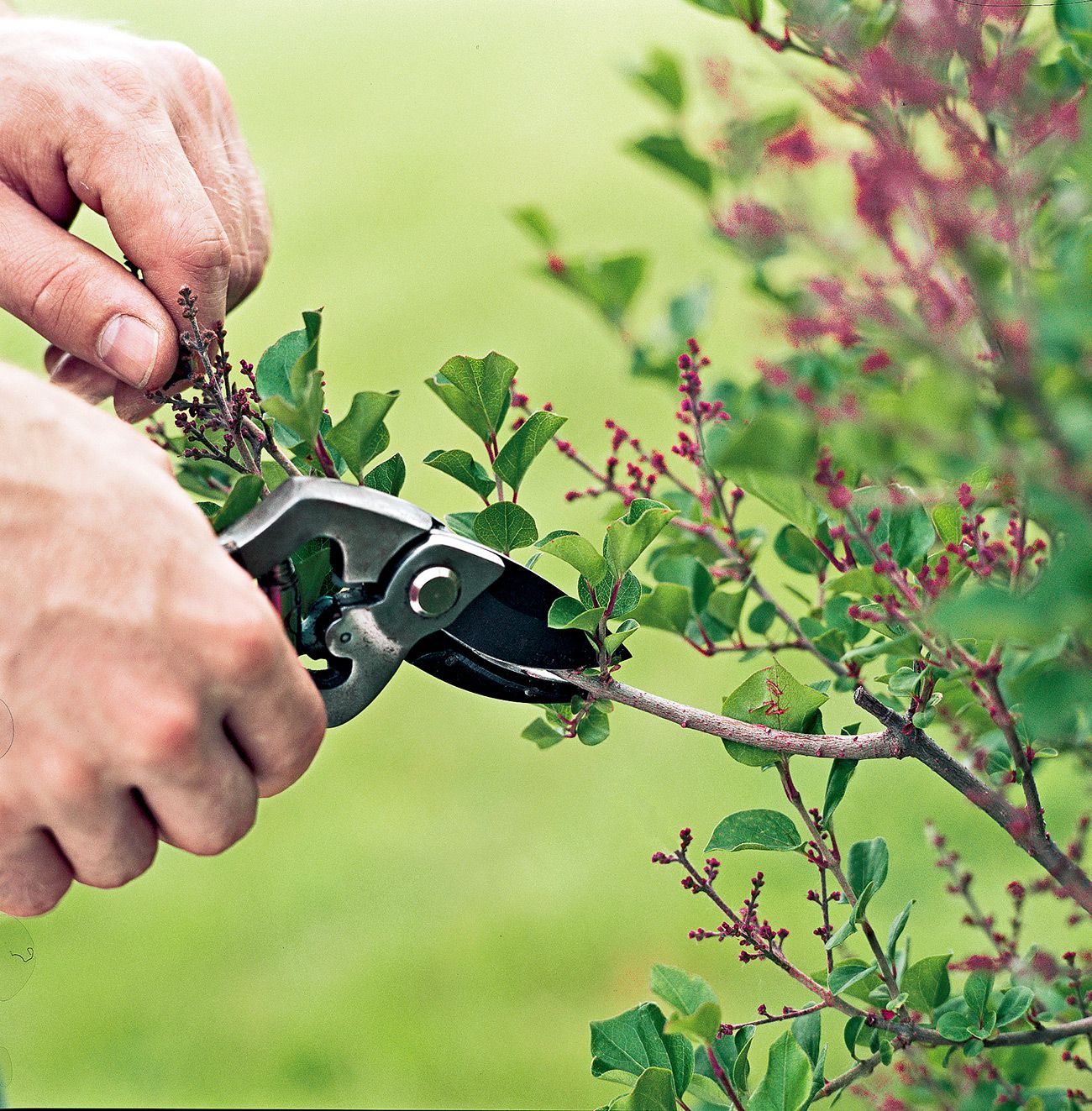
- Late Summer Pruning (Light Pruning): If you miss the ideal pruning window, a light prune can be done in late July or August. This should be limited to removing water sprouts, suckers, or dead and diseased wood. However, avoid heavy pruning during this time, as it can stimulate new growth that won’t have time to harden before the first frost, leading to damage during the winter.
- Avoid Fall Pruning: Pruning in the fall is generally discouraged. The reason for this is that fall pruning can encourage new growth just before the onset of winter. This new growth is particularly vulnerable to cold weather and is likely to be damaged by frost, which can weaken the tree and reduce the quality and quantity of fruit in the following season.
Instructions on how to properly prune an apple tree
Pruning a mature apple tree requires careful attention to ensure the tree remains healthy and productive. Here’s a detailed guide on how to properly prune a mature apple tree:
Remove Shoots from the Base
Start by removing any suckers, which are shoots growing from the base of the trunk or roots. These suckers often grow rapidly and can take away valuable energy from the main tree. Since they don’t contribute to fruit production, they should be cut off as close to the trunk or root as possible. Suckers can also create a dense canopy, preventing sunlight from reaching the inner branches and the ground beneath the tree. Removing them not only redirects nutrients to the fruit-bearing branches but also improves air circulation within the tree, reducing the risk of fungal diseases.
Eliminate Broken, Dead, or Diseased Wood

Next, inspect the tree for any branches that are broken, dead, or showing signs of disease. Diseased branches may appear discolored, have abnormal growth patterns, or be covered with fungi. These branches should be removed promptly to prevent the spread of disease to healthy parts of the tree. When removing a dead or diseased branch, make your cut just above the last healthy bud or down to the main branch or trunk if necessary. If a branch is dead throughout, remove it entirely. Regularly clearing out these problem areas keeps the tree healthy and strong, allowing it to focus energy on producing healthy fruit.
Cut Off Watersprouts and Downward-Growing Branches
Watersprouts are vigorous, vertical shoots that typically emerge from the upper parts of the tree or from old pruning cuts. They grow rapidly but are generally unproductive, bearing little or no fruit. Additionally, branches that grow downward tend to be weaker and less productive. Both watersprouts and downward-growing branches should be removed during pruning. Cutting them off at their base will help the tree conserve energy for more productive growth. This process, known as “thinning,” improves the tree’s shape and allows sunlight to reach the interior of the tree, which is crucial for the development of fruit.
Prune Crowded Branch Nodes
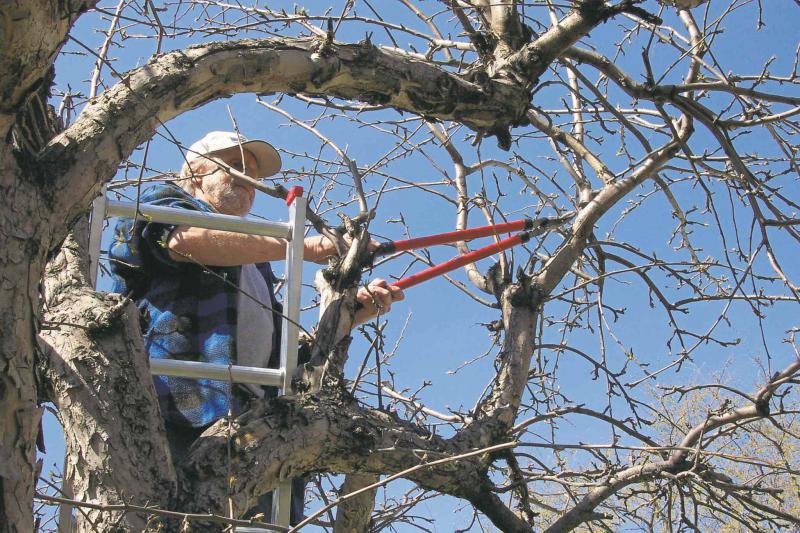
At points where multiple branches grow from the same location, known as “whorls,” it’s important to thin out the weaker shoots. Retain only the thickest and strongest branch in each cluster. This prevents overcrowding, which can lead to weaker growth and less fruit production. Crowded branches can also rub against each other, causing wounds that may become entry points for pests and diseases. By selecting the strongest shoot and removing the rest, you ensure that the remaining branch receives adequate nutrients and sunlight, leading to a healthier tree overall.
Shorten Remaining Branches
Once you’ve removed unnecessary branches, focus on the remaining ones. These should be shortened by about one-third of their length. This process encourages the branches to thicken and develop more flower buds, leading to better fruit production in the next growing season. When cutting, make your cuts just above an outward-facing bud. This encourages the new growth to extend outward, maintaining an open, vase-like shape for the tree. This shape not only looks aesthetically pleasing but also helps with sunlight penetration and air circulation, both of which are vital for fruit development.
Thin Out Young Fruits
Once the tree starts to bear fruit, it’s essential to thin out some of the young fruits. This should be done by hand, leaving one fruit per cluster of buds. Ensure that each remaining fruit is spaced about 6 inches (15 cm) apart on the branch. This practice prevents the tree from overburdening itself with too many small fruits. Instead, the tree can focus its energy on producing fewer but larger and healthier apples. Thinning also reduces the risk of branches breaking under the weight of too many fruits and helps in maintaining the overall balance and structure of the tree.
Above we have just shown how to properly prune an apple tree. Pruning an apple tree may seem daunting at first, but with a bit of practice and patience, it becomes a manageable and rewarding task. Proper pruning not only enhances the health and productivity of your tree but also improves its overall structure and appearance. Remember, the best time to prune your apple tree is during its dormant season, and always make clean cuts to prevent disease and promote healing. By following these guidelines and giving your apple tree the care it needs, you’ll enjoy a bountiful harvest of delicious apples for years to come.

Related articles
Top 5 Spring Tree Pests: Identifying and Managing Common Threats
How to Grow Virginia Creeper: A Complete Guide
How to care for cyclamen from the expert
Detailed instructions: How to care for propagated plants
Understanding tree diseases: Identification, prevention, and treatment
Detailed instructions: How to care for fruit trees
Detailed instructions how to grow winter vegetables
How to propagate an aloe plant: a detailed guide to the methods